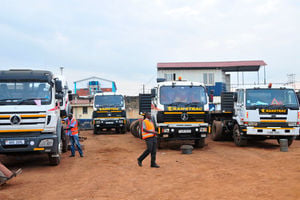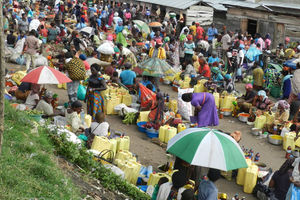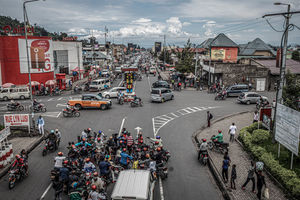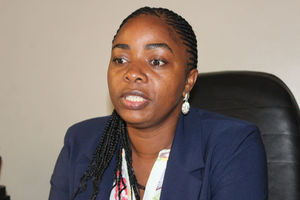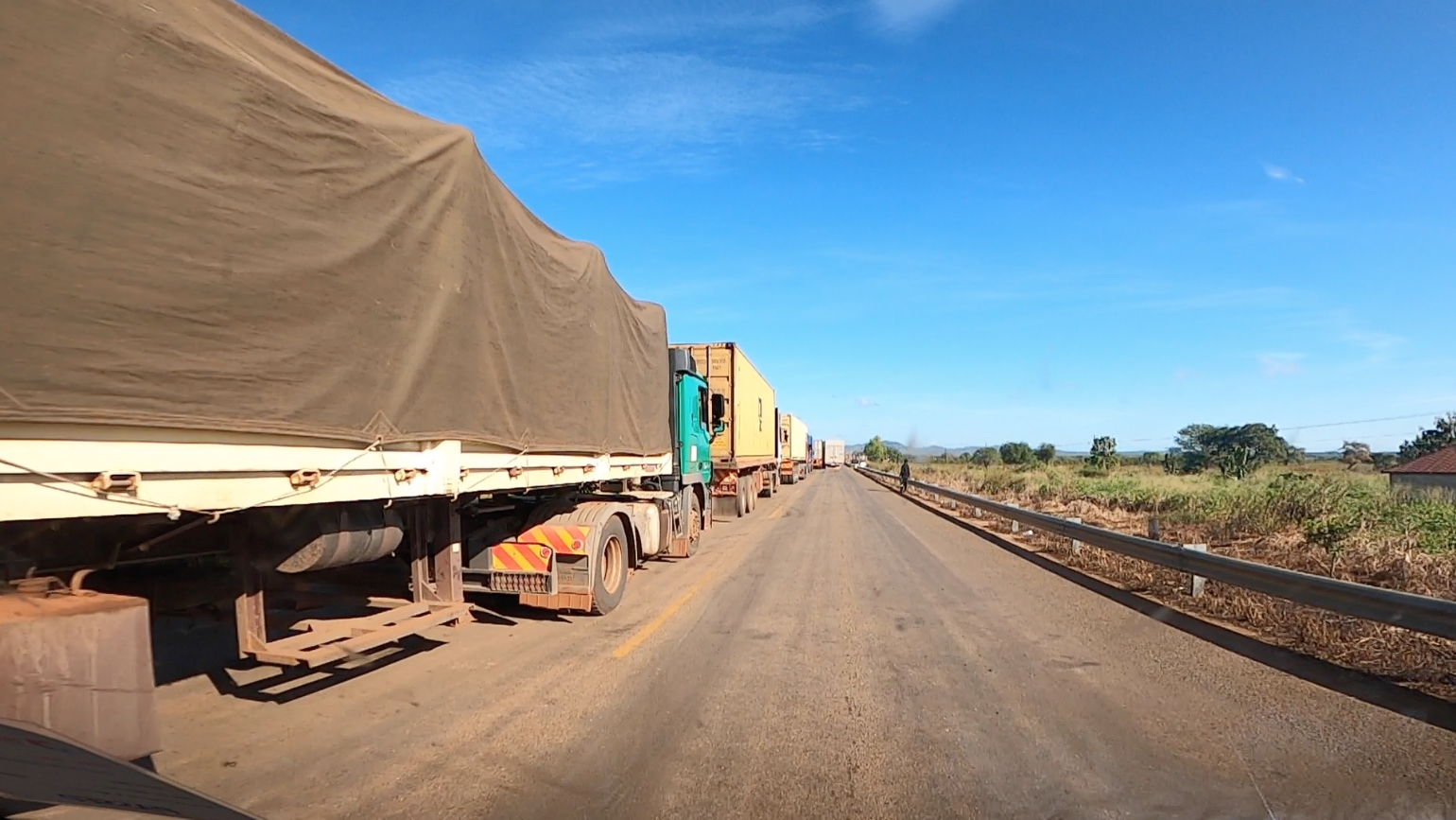
A queue of trucks at the border between Uganda and Democratic Republic of Congo. Photo/ Betty Ndagire
The Democratic Republic of Congo (DRC), about the size of Western Europe, with a market size of 108.4 million people, possess enormous trade and investment opportunities for Uganda.
DRC is Uganda’s top five export market in the world. Trade between the two countries has grown steadily over the last ten years. In 2021, Uganda’s merchandise exports to DRC reached the modest sum of $339 million (Shs1.2 billion), a growth of over 40 percent when compared with 2011.
However, this official trade figures do not reflect the full breadth of bilateral trade flows, since the bulk of the cross-border trade is informal.
Uganda has taken important steps towards unlocking market opportunities in DRC through several activities including trade missions. What remains now is to develop a clear follow up mechanism, which could help the private sector concretise the registered opportunities. However, this is only possible if we have a clear understanding of the DRC market. Therefore, the private sector and Government needs to take note of the following five points which are informed by findings of the market dynamics study on the DRC market conducted by PSFU.
DRC economy is resilient and continues to grow!
Albeit the ongoing conflict in the East and the lingering effect of past shocks, the DRC’s economy has shown resilience, with real Gross Domestic Product (GDP) growth estimated at 8.9 percent in 2022 (IMF, 2023). Growth prospects remain favourable, while risks are tilted to the downside from the conflict in the east, and adverse terms-of-trade shocks. The success of general elections in December 2023 and the formation of new government in March 2024 could allow the country to continue the path of political stability and pursue the necessary reforms needed to accelerate growth and enable the Congolese people and the DRC’s regional partners (especially Uganda) to benefit from the enormous potential that the country abounds.
Uganda’s expansion in the DRC market can be expected from three fronts.
The first front is enlarging its current export basket in the DRC (through export consolidation). The majority of the candidates for this consolidation are manufactured products including cement, palm oil, sugar, wheat or maize flour, beer made from malt; flat-rolled products of iron or non-alloy steel, hot-rolled or cold-rolled, bars and rods of iron or non-alloy steel, tubes, pipes and hollow profiles. Second front is expanding in new markets where Uganda’s potential exists.
Uganda’s products with greatest export potential in the DRC include flat-rolled products of iron or non-alloy steel, fish, medicaments, poultry products, maize flour, cassava flour, plantain, beans, fruits and vegetables particularly apple, bananas and pineapples from Uganda through Cyanika border, Mpondwe, Vvura and Bunagana border (when it reopens) although production capacity challenges still constrain Uganda’s ability to supply consistently. The third front is entering a new market linked to the extraction industry (mining sector). Mines in Congo are still producing copper and cobalt, and Uganda (given its proximity) needs to position itself as a reliable supplier of essential mining supplies.

Ugandan products in Democratic Republic of Congo. Mines in Congo are still producing copper and cobalt, and Uganda (given its proximity) needs to position itself as a reliable supplier of essential mining supplies Photo/ Betty Ndagire
Business location matters
There is direct economic value in terms of market size of the various locations within Kinshasa and Goma, translating into the amount of revenue a firm can generate from its customer base, and grow. Average monthly purchase per client ranges from US$2,809 in Goma commune in Goma to US$14 million in Tshiangu commune in Kishasa. At an average minimum purchase of $355 per client per month, businesses located in Gombe have the opportunity to realise a minimum of $106,590 in sales and a maximum of $1.6 billion, monthly.
Work through local agents
Using a local agent is seen as an effective way to deploy a sales force in the DRC especially in Kinshasa where average number of agents per firm is as high as 11 and experience with sales agents is up to 11 years. Local sales agents are known to bring experience and knowledge of the local market.
Invest in market information.
When traders reach the point of deciding their need to make a purchase, they are engaged in information search, and a series of pre-purchase behaviours, usually technology-enabled, that result in experiences they regard as frictionless and effective. Therefore, providing market information would be a noble thing to promote Uganda products in the DRC market, in the region and overseas markets.
In conclusion, the prerequisite to a steady and sustainable growth of Uganda’s exports to the DRC (both formal and informal) is building a strong production base and productivity, and investing in value chain, unlocking export-oriented financing, while adhering to product quality requirements especially sanitary and phytosanitary standards (SPS).
The ongoing EAC integration process and various bilateral arrangements should be more profound to address the challenges of deficient infrastructure, in security, high transport costs, high multiples provincial taxes, government bureaucracy, limited access to finance and weak administrative capacities which continue to inhibit trade across two countries.
DRC-Uganda trade
Potential areas
Uganda’s products with greatest export potential in the DRC include flat-rolled products of iron or non-alloy steel, fish, medicaments, poultry products, maize flour, cassava flour, plantain, beans, fruits and vegetables particularly apple, bananas and pineapples from Uganda through Cyanika border, Mpondwe, Vvura and Bunagana border (when it reopens) although production capacity challenges still constrain Uganda’s ability to supply consistently.
The writer, Eric Sempambo is an independent economist.
